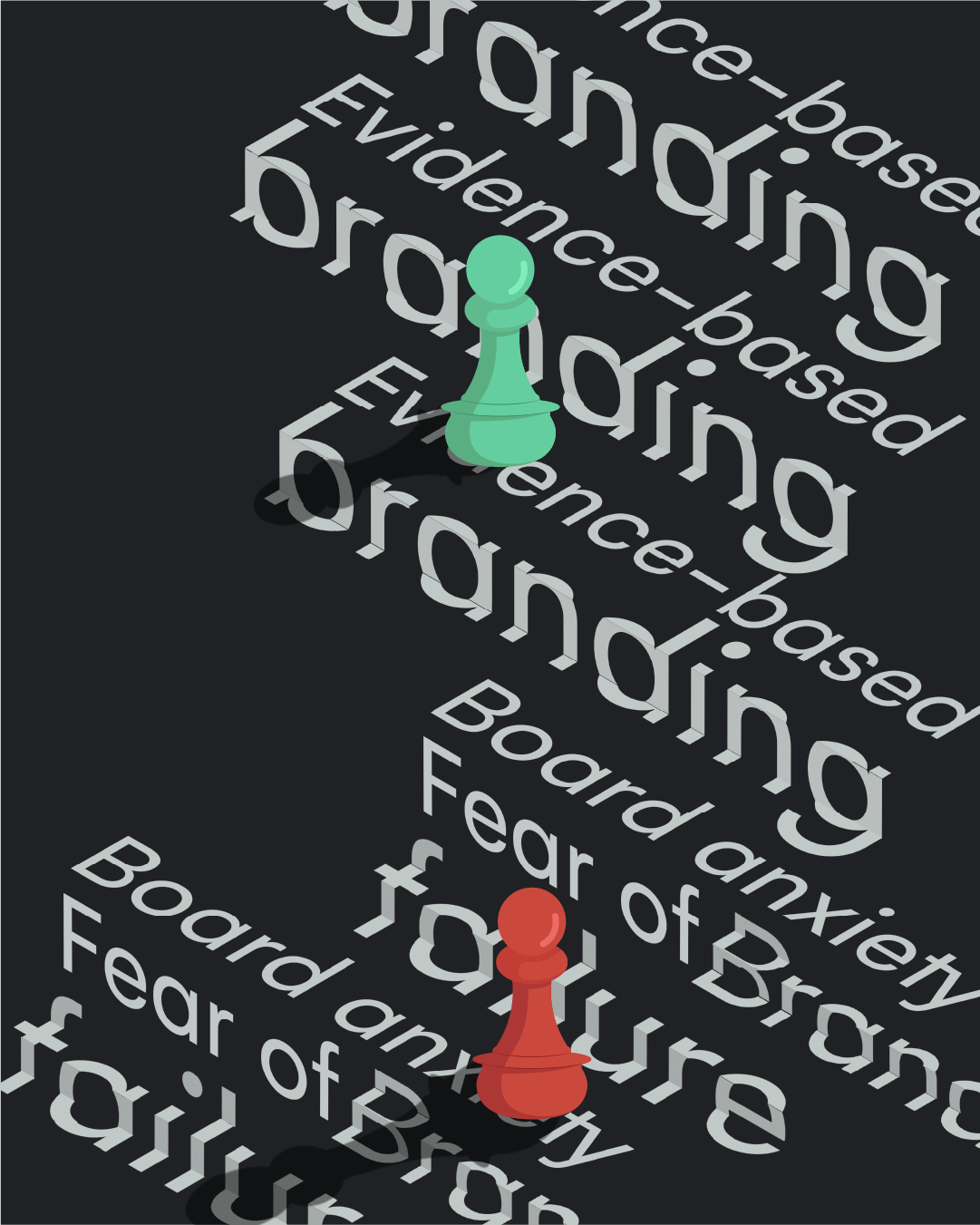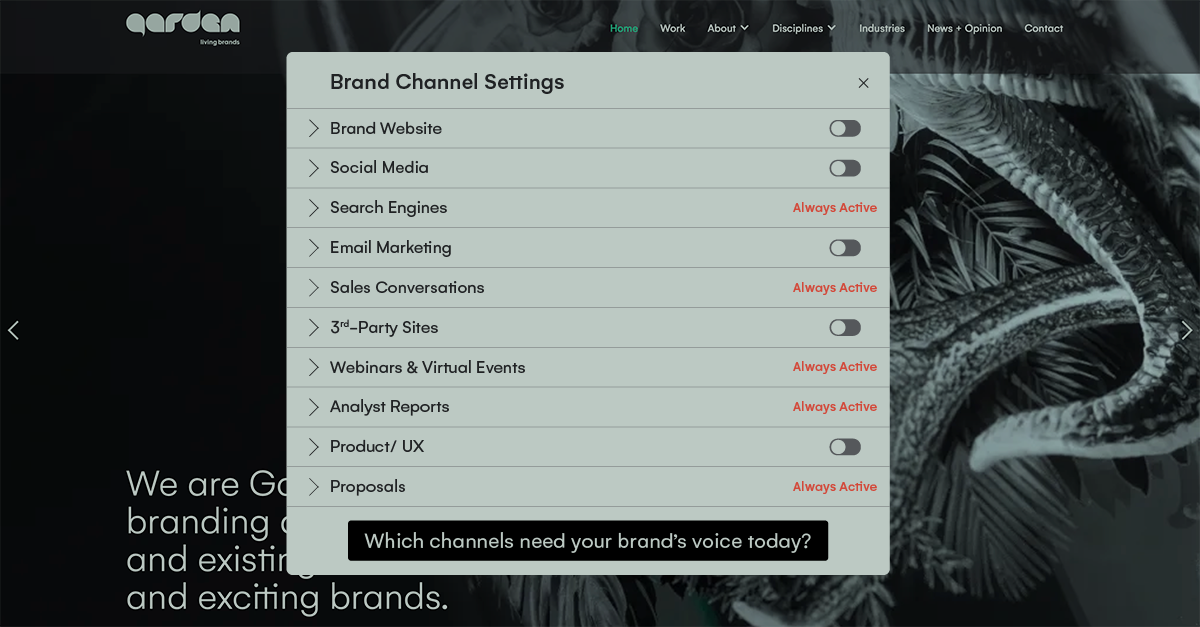Brand mission statements: What are they & how to define yours
Picture your brand as more than just a logo or a product – it's a force that can shape markets and move people to action. At the heart of every successful brand lies something powerful yet often overlooked: its mission statement. This isn't just another corporate checkbox; it's the compass that guides your brand's journey and the story that resonates with your audience.
Whether you're launching a new venture or reimagining an existing brand, crafting a compelling mission statement is your first step toward building something truly meaningful. Let's explore how to create a mission statement that not only captures your brand's essence but also drives its success.
Understanding brand mission statements
A brand mission statement is far more than a few carefully chosen words – it's a clear declaration of your brand's purpose and the value it brings to the world. Think of it as the bridge between what your brand does today and the change it aims to create tomorrow.
Definition and core components
At its heart, a brand mission statement answers three crucial questions:
- What does your brand do?
- How does it do it?
- Why does it matter?
These elements combine to create a powerful statement that guides both internal decisions and external perceptions.
Why brand missions matter for business growth
Your mission statement isn't just about inspiration – it's a practical tool that:
- Shapes strategic decisions
- Attracts aligned customers
- Guides product development
- Inspires team members
- Creates meaningful differentiation in the market
The difference between mission, vision, and purpose
While often confused, these three elements serve distinct roles:
- Mission: The what and how of your current actions
- Vision: Your aspirational future state
- Purpose: The fundamental reason your brand exists
Key characteristics of effective mission statements
The most impactful mission statements are:
- Clear and concise
- Action-oriented
- Authentic to your brand
- Meaningful to both customers and employees
- Distinctive within your market
Brand mission vs other brand elements
Like notes in a symphony, each element of your brand plays a distinct role in creating a harmonious whole. Understanding these differences helps you craft a mission statement that works in concert with your broader brand strategy.
Brand mission vs brand purpose
- Your mission is the path you're walking today
- Your purpose is the reason you started the journey
- While purpose answers "why," mission answers "what and how"
- Example: If your purpose is to make technology accessible, your mission might be to create intuitive software solutions for small businesses
Brand mission vs brand vision
- Your mission reflects current actions and focus
- Your vision paints a picture of future impact
- Mission is grounded in today's reality
- Vision stretches into tomorrow's possibilities
- Think of mission as your roadmap and vision as your destination
Brand mission vs brand identity
- Mission defines your direction and actions
- Identity encompasses visual and verbal expression
- While mission guides decisions, identity shapes perceptions
- Identity should reflect and support your mission, not define it
Brand mission vs brand voice
- Mission states what you do and why
- Voice determines how you communicate
- Your mission influences your voice, but they're distinct elements
- Like living things that need nurturing, each element of your brand plays a vital role in its growth and success
The importance of brand mission statements
In a landscape where consumers increasingly choose brands based on values and purpose, your mission statement becomes a powerful differentiator. More than just words on a website, a well-crafted mission statement acts as the foundation for every business decision, team alignment, and customer interaction. It's the compass that guides your organisation through growth and change, while maintaining authenticity in an increasingly competitive market.
Your mission statement serves as a strategic framework, helping teams evaluate opportunities and make decisions that align with your core purpose. When everyone understands and believes in the mission, it creates a powerful sense of unity and direction that resonates throughout the organisation.
Consider these key benefits of a strong mission statement:
- It guides strategic planning and decision-making at every level of your organisation
- It unifies teams around a shared purpose, creating stronger cultural cohesion
- It communicates your unique value proposition to customers authentically
- It builds lasting trust through consistent, purpose-driven actions
- It differentiates your brand by highlighting your unique approach and values
A powerful mission statement doesn't just tell people what you do – it shows them why it matters. When customers connect with your mission, they're not just buying a product or service; they're investing in your vision for change. This emotional connection transforms casual customers into loyal advocates who share your values and support your purpose.
How to define your brand mission
Creating a mission statement isn't about following a template – it's about uncovering the authentic purpose that drives your brand forward. This process requires introspection, collaboration, and a clear understanding of your brand's role in your customers' lives.
Starting with your brand story
Every brand has a story that sparked its creation. Begin by exploring your origin: what problem did you set out to solve? What change did you want to create? Your mission often lies within these founding moments. Consider what motivated you to start, what gaps you saw in the market, and what unique perspective you brought to solving these challenges.
Identifying core values
Your brand's values are the principles that guide how you operate. These aren't just aspirational words – they're the behaviours and beliefs that define your approach. We seek the unique and simplify the complicated - your mission should do the same. Ask yourself:
- What principles do you refuse to compromise on?
- How do these values shape your decisions?
- What makes your approach different from others?
Understanding your audience
Your mission should resonate with both your team and your customers. Dive deep into understanding:
Who benefits from your work? What change do you create in their lives? What larger impact does this have on society?
Mapping your impact
Consider your brand's ripple effect – how does your work create positive change beyond immediate transactions? This might include:
- Direct benefits to customers
- Broader industry influence
- Community impact
- Environmental considerations
- Cultural contributions
Your mission statement should capture the essence of this impact, showing how your daily actions connect to larger positive change.
Steps to craft your mission statement
The process of writing your mission statement should be both methodical and creative. Like crafting a piece of art, it requires careful attention to detail while maintaining a bold vision for the final result.
Gathering insights from stakeholders
Start by bringing together perspectives from across your organisation. Your mission statement should reflect collective wisdom and shared aspirations. This means engaging with:
- Team members at all levels
- Long-term customers who understand your value
- Partners who work closely with your brand
- Industry experts who understand your market position
Drafting your initial statement
When putting pen to paper, focus first on capturing the essence rather than perfecting the words. Begin with these elements:
- What you do (your core offering)
- How you do it (your unique approach)
- Why it matters (your impact)
- Who benefits (your audience)
Write several versions, experimenting with different ways to express these core elements. Don't worry about perfection – focus on authenticity and clarity.
Testing and refining
Your mission statement should resonate with both internal and external audiences. Test your drafts by:
- Sharing with different team members for feedback
- Getting customer perspectives
- Reading it aloud to test flow and impact
- Checking if it feels authentic to your brand
- Ensuring it's memorable and clear
Implementation across touchpoints
A mission statement should live beyond your website's 'About' page. Consider how it will:
- Guide marketing messages
- Inform product development
- Shape customer service approaches
- Influence partnerships
- Drive internal communications
Best practices for mission statements
Crafting an effective mission statement requires balancing clarity with impact. Think of it as distilling your brand's essence into its purest form - every word should earn its place and contribute to the larger message.
Follow these essential guidelines to ensure your mission statement resonates:
- Keep it concise - aim for one to three sentences maximum
- Use clear, jargon-free language that anyone can understand
- Focus on action and impact rather than abstract concepts
- Ensure it's specific enough to guide decisions but broad enough to allow growth
- Make it memorable - if people can't remember it, they can't be guided by it
Common elements of strong mission statements:
- Active verbs that show direction
- Clear benefits to stakeholders
- Unique brand positioning
- Authentic brand voice
- Future-focused perspective
Examples of effective brand missions
Let's look at some mission statements that exemplify these best practices:
Google: "To organize the world's information and make it universally accessible and useful." Why it works: Clear, ambitious, and focused on specific impact
Nike: "To bring inspiration and innovation to every athlete in the world. If you have a body, you are an athlete." Why it works: Inclusive, inspiring, and defines their audience broadly
Patagonia: "We're in business to save our home planet." Why it works: Bold, memorable, and clearly states their driving purpose
Final thoughts
Creating a powerful brand mission statement isn't just an exercise in corporate communication - it's about defining the beating heart of your brand and its impact on the world. A well-crafted mission statement acts as both compass and catalyst, guiding your decisions while inspiring action.
The strongest brands don't just state their mission - they live it. As you move forward with defining your brand's mission, focus on creating something that not only sounds inspiring but truly reflects the change you want to create in the world. Reach out to our consultancy team if you need help with your brand strategy and mission statement! See our branding methodology.

















.jpg)





































































